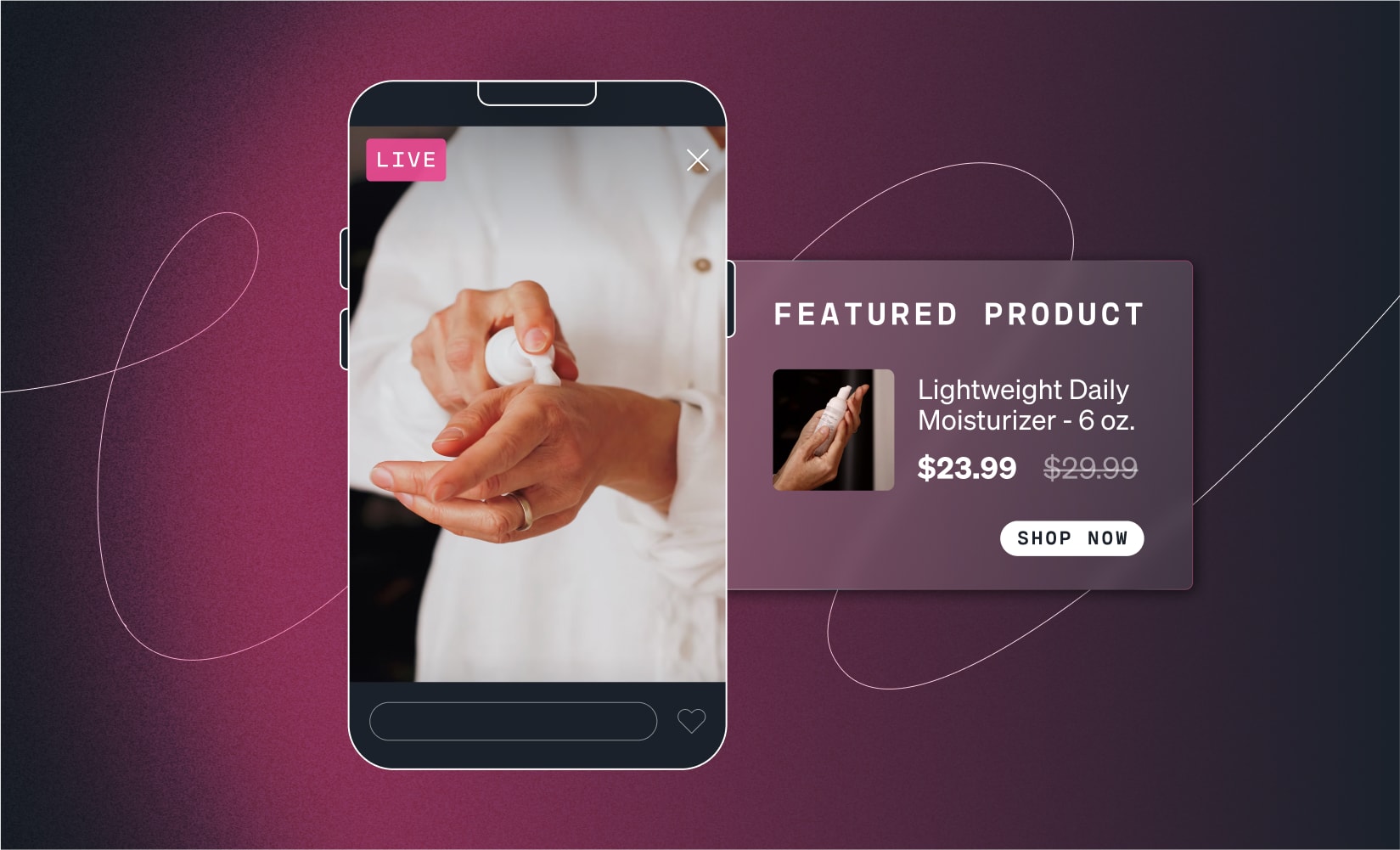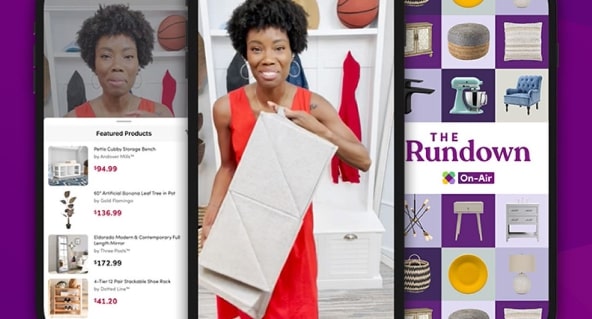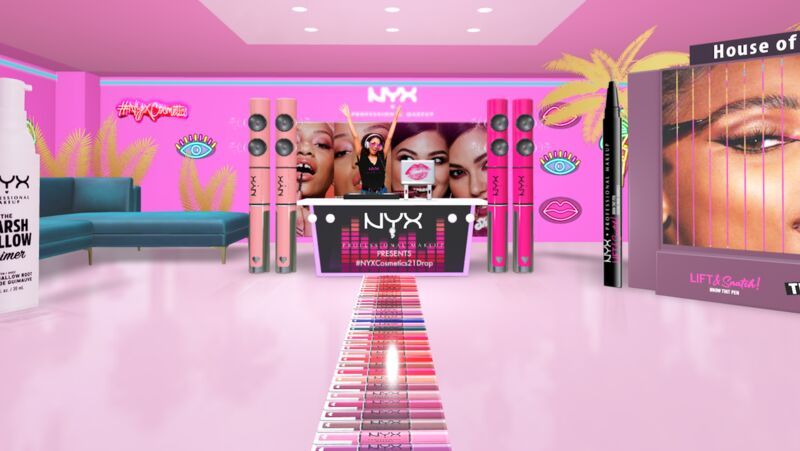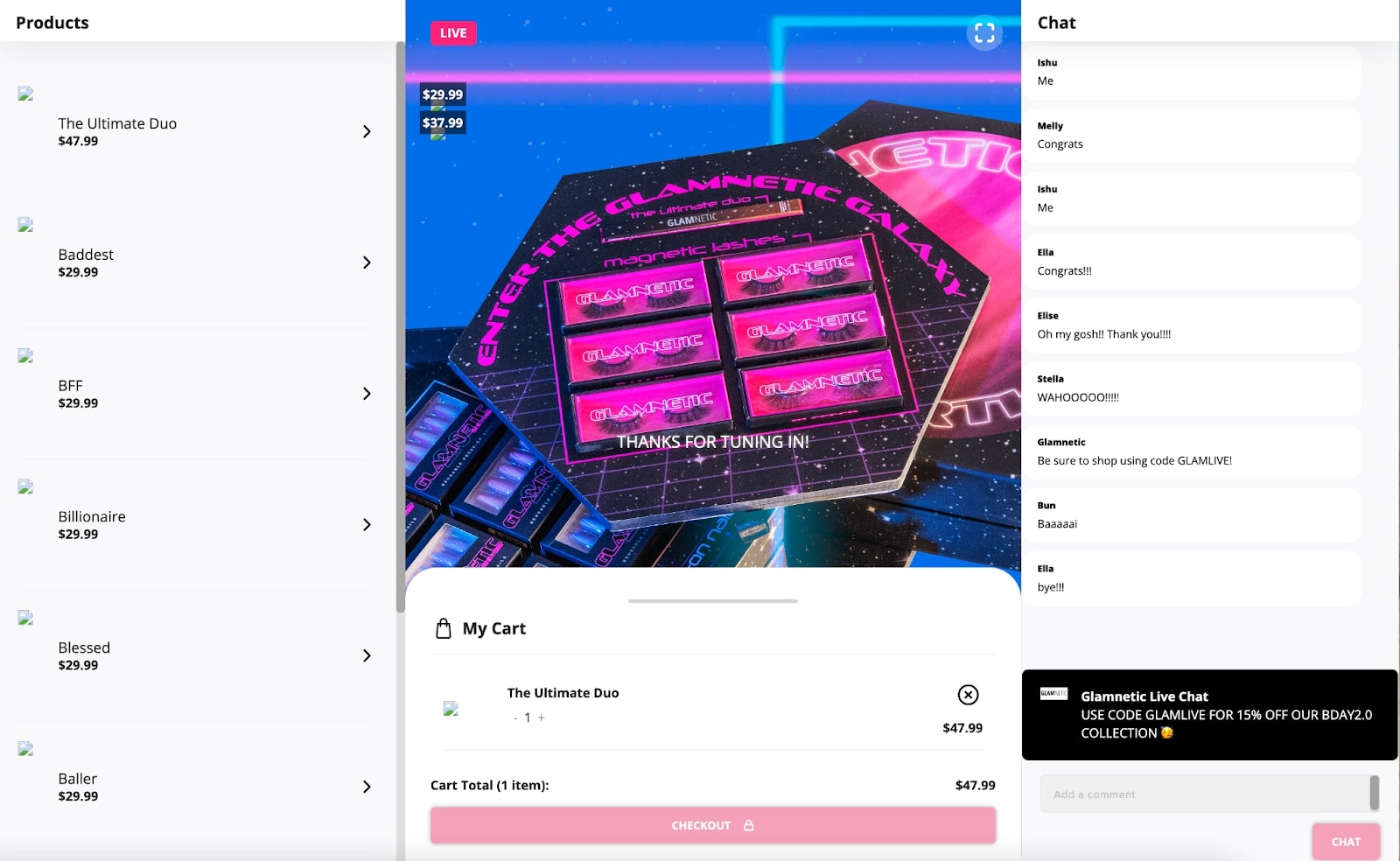Live Shopping: 6 Trends and Best Practices to Conquer Live Commerce in 2023

New marketing tactics emerge every day in ecommerce. Some are fads; others have the potential to catapult your DTC business and generate large profits. Live streaming falls into the second category.
Retailers in the US generated $11 billion from live commerce in 2021—a figure set to reach $35 billion by 2024.
Shoppers clearly enjoy taking part in interactive experiences, voting with their wallets and spending hours watching live video. The real question is: how can you offer live shopping experiences that your potential customers actually engage with?
Here, we’ll share the benefits of having a live shopping strategy, with six trends and best practices to get the ball rolling yourself. Throughout we’ve added real examples of live shopping from some of the top brands pulling it off especially well.
Jump through at your own pace:
- What is live shopping
- The benefits of adding live shopping to your marketing mix
- 6 live shopping trends and best practices as you expand your strategy
Live shopping is a way for customers to purchase products or services through a live stream. This traditionally happened through TV shopping networks like QVC. However, social media platforms are evolving to facilitate this real-time shopping experience online.
Facebook Live is the most popular live stream shopping platform, though platforms like YouTube are teasing live shopping features. It contributed to live commerce’s 76% growth throughout the COVID-19 pandemic.
Shoppers enjoy purchasing this way (everyone loves a walkthrough), and it helps bridge the ecommerce gap when you can see live video of product dimensions, fabrics, and how things look amid real spaces, lighting, and environments. Live shopping can add the element of seeing things on display that shoppers miss from an in-person experience.
Unsure whether live commerce is worth investing in as part of your marketing mix? Let’s take a look at the benefits live shopping brings a DTC brand.
- Fewer returns: Items purchased through live streams see a 40% lower return rate—likely because shoppers can see products almost as if they’re in the flesh when online shopping. It combats the 5% of ecommerce returns that happen because a product looks different in real life than imagined.
- Customer interaction: Some 73% of marketing leaders already use live stream video as a digital customer engagement tactic. It beats live audio, virtual communities, and influencer marketing as tactics in play to date.
- Capture mobile shoppers: Collectively, viewers watched 482.5 billion hours of live streams through mobile devices in 2020. Brands like Wayfair are launching their own live stream channels through a mobile app to combine mobile commerce with live shopping.
- Attract younger audiences: Gen Z are most likely to engage with live streams, making it a smart ecommerce tactic if this demographic forms your target market.
- Demonstrate products: Apparel, fashion, beauty, and fresh food have the highest percentage of live stream viewers since viewers can see products being used (unlike static photos on a product page.) It stands to reason that the success of these verticals extends into others like outdoor living and decor, for example.
- Conversion: According to Shop LIT Live, retailers have achieved conversion rates of 10-15% with live streaming, compared to 1-2% through traditional ecommerce.

#cta-visual-pb#<cta-title>Build landing pages that convert<cta-title>Create and customize landing pages with all the vital elements for conversions—or build a fabulous homepage quickly.Start designing today
If you’re convinced to add a live commerce channel to your marketing strategy, here are six trends and best practices to make live streaming worth your while from the start.
- Diversify your live commerce strategy
- Host live shopping events in the metaverse
- Tag products from social media storefronts
- Partner with creators
- Tag onto live shopping festivals
- Integrate live shopping platforms with your store experience and performance
1. Diversify your live commerce strategy
Mastering any new marketing channel is both an art and science. The first approach you land upon likely won’t be the one that attracts the most customers at the lowest cost. It takes experimentation to uncover which live streams your target customers engage with.
To help with this, diversify your live shopping strategy to determine which formats get the best results. This includes experimenting with:
- Calls to action: Does “shop now” convert better than “click to buy”?
- Content formats: Do people prefer long vs. short-form live streams?
- Hosts: Do influencers, existing customers, or your internal team get more watch time when featured in your streams?
- Topic: Do customers prefer to watch unboxing videos, candid customer reviews, or something else like lifestyle content live?
- Platform: Do live streams on social media outperform live streams on marketplaces like Taobao or Amazon Live?
“Amazon visitors are often in the market for a purchase, whereas Instagram and TikTok are more about enjoyment. Examine different platforms and select the one that yields the greatest results.” — Ellie Shippey, ecommerce growth specialist at EZContacts
Stephanie Venn-Watson, co-founder of Fatty15, landed upon live shopping events paired with educational webinars about the product: “For us, the main focus is getting the information out about the health benefits of our product. With that, the product sells itself…”
“We keep education as the focus of the events, with the option to purchase being secondary,” Stephanie continues. “The webinars are a great lead magnet, and many who do not purchase during the virtual events end up purchasing later as we market to them via email.”
2. Host live shopping events in the metaverse
The metaverse is no longer a buzzword. An increasing number of people are engaging with brands in the metaverse—a virtual reality that allows shoppers to play in a simulation of the real world online.
Fashion and beauty brands are primed to take advantage of this new virtual world. Statista estimates the potential market expenditure of the apparel sector in the metaverse is $594 billion, with 23% of people saying they’d spend a lot of money on collectible clothes or accessories in the metaverse.
Take a leaf out of NYX Cosmetics’ book. The beauty retailer live streamed concerts in its virtual shoppable metaverse, allowing attendees to use augmented reality (AR) to virtually try on its products and shop in the metaverse store.

Or, combine live commerce with the metaverse using platforms like Whatnot. The site has a category specifically for NFTs, where brands can sell NFTs through live streams.
Ultimately, consider what kind of event online might feel novel and especially interesting to your target audience and what technology might support it. Creativity reins supreme here, and the greater the digital experience, the more your potential win with your target market.
3. Tag products from social media storefronts
Social media platforms have evolved to take advantage of consumers’ modern buying experiences. Some 52% of shoppers are “very interested” in the ability to click and immediately buy anything they see during a live shopping event.
Platforms like Facebook and Instagram Live now offer social media storefronts for brands to do this via live commerce.
Take Stryx and Curie, for example. Both DTC brands sell skincare and host TikTok live videos to capitalize on each other’s audiences. Viewers can click the link to discover more information about the product on show, completing their purchase in just a few clicks.
The result? Jon Shanahan, Stryx’s founder, said the live stream got 2 million views in 24 hours—an incredible rise in brand awareness.

The key to successfully combining social commerce with live video shopping is to identify which social media channels your target audience is using. Focus your efforts on those with the highest engagement, syncing your Shopify or BigCommerce inventory to create in-app live shopping experiences that convince viewers to buy.
#cta-paragraph-pb#Remember: the less friction between potential customers and hitting the “checkout” button, the higher your conversion rate will be.
4. Partner with creators
More than 50 million people now consider themselves to be creators. That’s great news for DTC brands looking to capitalize on an influencer’s existing social media following via live shopping.
Use tools like Upfluence, Heepsy, or the TikTok Creator Marketplace to discover social media influencers that your target audience follows. Reach out to them with a collaboration request, asking them to host a live stream for your brand (either on your account or theirs).
“Platforms that will win with consumers are ones that have the strongest creator communities with the most exclusive and convenient merchandising value proposition.” — Rachel Tipograph, founder and CEO of Mikmak via Modern Retail
Pants and Socks is one DTC brand using this live commerce strategy. Its founder Richard Clews says:
“We have several partnerships with professional athletes that use our brand, and we have discussed designing really cool live stream events centered around them—where our customers would get to interact with them and ask questions. It’s a really cool way for us to share in a bigger market.”
“…We’ve worked hard to earn the trust of people we ask to represent our brand and we want to be a part of creating a bigger platform for us and them moving forward,” Richard adds. “Sports fans are a sizable audience that share a lot of common traits with our target audience, and we want to take advantage of that.”
5. Tag onto live shopping festivals
China is leading the way with live commerce. What’s more, gross merchandise volume (GMV) through live video streaming will account for 24.3%of all ecommerce transactions by 2023.
Shopping festivals play a crucial role in China’s incredible success with live shopping. Events like 618 and Single’s Day are major retail days in China—the latter of which generated $30 billion in 2021. That’s five times bigger than Black Friday in the US!
The only problem? Live shopping festivals can be crowded. Stand out from the competition by involving influencers and creators in your live streams. Some 12 million Chinese consumers watched Kim Kardashian’s live stream with influencer Viya, prying attention away from other brands with biased live streams hosted by their own team.
While these live shopping festivals aren’t as popular elsewhere in the world, use the same concept and host live video streams around important events for your brand.
ThreeShipsBeauty, for example, did a live stream to celebrate its fifth birthday. Pai Skincare did an Instagram Live Q&A session with its founder on International Women’s Day.

#cta-paragraph-pb#Are you posting when your audience is online? Learn the best times to post on Instagram for better engagement.
6. Integrate live shopping platforms with your store experience and performance
It might sound counterintuitive, but retailers shouldn’t expect every interested shopper to attend the live stream in real-time. People are busy; the timeslot you’ve chosen for the event won’t work for everyone.
That doesn’t mean you’ll miss out altogether. Capture the 70% of live stream sales that happen after an event by integrating live shopping platforms with your online store.
Take Glamnetic, for example. The DTC beauty brand hosts live streams on TikTok and uses LyveCom to embed live-streamed content on its ecommerce website. Visitors to the site can watch the live stream even if they were previously unaware of its existence.

Ensure your online store is able to support an influx of traffic based on its underlying technology/architecture. The last thing you want is to turn visitors away with a 404 message after attracting them in the first place with a successful stream!
Offer live shopping experiences to your customers
Overall, live commerce is more than a marketing trend. China has proven it to be a valuable sales channel for businesses of all sizes. It’s only a matter of time before the popularity of live streaming video leaks out into other markets.
To make live streaming a success for your ecommerce business, prioritize the customer experience above all else. Invite creators your target market admires, talk about topics that interest your shoppers, and be active on the live streaming platforms they already know and explore.
More importantly: make sure you don’t fall at the last hurdle and leave dollars on the table.
#cta-visual-pb#<cta-title>Ensure your ecommerce site is ready for live streaming success<cta-title>Create and customize landing pages with all the vital elements for conversions—or build a fabulous homepage quickly.Start designing today

Elise Dopson
Elise Dopson is a freelance writer for B2B commerce and martech companies. When she's not writing, you'll find her in the Peak Freelance community or on Twitter.



